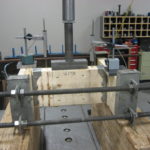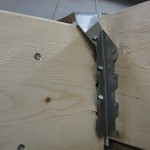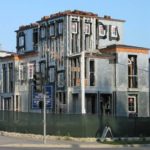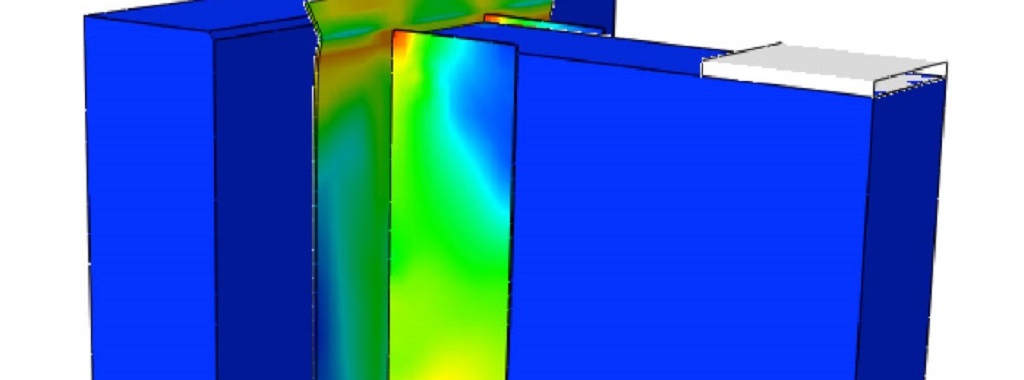It’s that time of year again: newly graduated college students are entering the workforce. For the student, it’s an anxious time. They are often wondering how and if four plus years of college has effectively prepared them for the real working world. For the potential employer, it can be a gamble. They have decided to take a chance on someone who likely does not have any professional work experience, but expect production from day one. On a recent visit to Cal Poly San Luis Obispo, my colleague Scott Fischer got a firsthand view of what students are doing to prepare for a career.
Author: Paul McEntee
Is It Friday Yet? Maintaining A Positive, Motivational and Fun Work Environment
It’s not Friday yet, but I am looking forward to the obnoxious Hawaiian shirts some of my coworkers wear as part of our Engineering Department’s unofficial Hawaiian Shirt Day each week. It’s a little thing, but it definitely helps lighten the mood and gives us all an opportunity to interact with each other.Continue Reading
How We Test – Part I: Wood Connectors
If you have followed some of my earlier blog posts, you know I am passionate about testing. In my post, Testing – Then and Now, I said, “There simply is no substitute for a physical test.” Something I haven’t discussed in much detail, however, are some of the complexities involved in a good test.

For wood connector testing, we follow ASTM D7147-11 Testing and Establishing Allowable Loads of Joist Hangers. The actual testing is relatively straight forward – build at least three setups, test them, measure the deflection and ultimate loads.

Top 3 Roof Deck Design Considerations for High Wind Events
Was it JFK who said, “The time to repair the roof is when the sun is shining?” He was likely using the roof as an analogy for the economy, but I take things literally and wanted to talk about roofs. The time to think about the design of your roof and its function in a high wind event like a hurricane or tornado is right now.

During a high wind event, a roof deck is expected to perform many functions. It should prevent water intrusion from rain, withstand impacts and protect those inside from hail. It also needs to act as a diaphragm – transferring lateral loads to shear walls and resisting the vacuum effects of wind uplift forces.Continue Reading
Flexible or Rigid? Multi-Story Light-Frame Structure Design Considerations
I like to think I’m flexible, but I’ve been accused of being rigid at times. I guess that’s what therapy is for. If you were to ask a light-frame structure diaphragm that same question, you would likely get multiple conflicting answers. The 1988 UBC first introduced parameters to evaluate diaphragm rigidity. Earthquake Regulations Section 2312(e)6 stated:

Provision shall be made for the increased shears resulting from horizontal torsion where diaphragms are not flexible. Diaphragms shall be considered flexible for the purposes of this paragraph when the maximum lateral deformation of the diaphragm is more than two times the average story drift of the associated story. This may be determined by comparing the computed midpoint in-plane deflection of the diaphragm under lateral load with the story drift of adjoining vertical resisting elements under equivalent tributary lateral load.
Vacation – Can Engineers Take It?
My blog post is late this week – I’m going to blame it on vacation. According to this article analyzing a study by Expedia, Americans did not use $34 billion worth of vacation time they were entitled to in 2011. This started me thinking about how difficult it can be for structural engineers to take a real vacation.Continue Reading
Do 50 Kip Wood Construction Connectors Exist?
The 2009 IBC Section 1604.4 states, “Load effects on structural members and their connections shall be determined by methods of structural analysis that take into account equilibrium, general stability, geometric compatibility and both short and long-term material properties.” This requirement applies to a 200 pound handrail connection as well as a 50,000 pound glulam connection.Continue Reading
Building a Storm Shelter to ICC-500 Design Requirements
According to the National Weather Service, 2011 ranked right up there as one of the worst years on record for tornadoes, having set records for the earliest date of the first tornado, the most states reporting tornadoes, the greatest monthly total, the greatest daily total, and the highest estimated property and crop losses. (Take a look.)
You may wonder: What can I do to protect building occupants (perhaps even my family) in a tornado? It is possible to build your home to higher wind resistance than normally required so that it can resist weak to moderate tornadoes? See my previous blog post, “Designing Light-Frame Wood Structures for Resisting Tornadoes. It Can Be Done!” and also our tornado technical bulletin for more information. But to resist the strongest of tornadoes, the most economical solution is a storm shelter located nearby or in your home. Continue Reading
Ignore Seismic Requirements When Wind Controls?
Prior to joining Simpson Strong-Tie, my career involved the design of projects in California’s San Francisco Bay Area. When designing the primary lateral force resisting system, I would have several pages of seismic base shear calculations and, oh yeah, a one- or two-line calculation of the wind forces – just to show that seismic governed. There was no need for complete wind analysis, since the seismic design and detailing requirements were more restrictive. Of course, building components such as parapets, cladding or roof screens needed a wind design. Unfortunately, when wind appears to control, meeting the seismic requirements is not so simple.
CFS Framed Shear Walls – A Code History

In a previous blog post, I talked about the challenges engineers may face when designing cold-formed steel and some resources available. When designing a building to the current building code, it can be helpful for engineers to understand the history of the different code requirements. This week I will discuss the code development history of CFS framed shear walls.
Prior to the 1997 Uniform Building Code (UBC), there were limited code provisions for design of cold formed steel-framed shear walls. The 1994 UBC had seismic R-factors for light-framed walls, but little else with respect to design or detailing. Code provisions were introduced in the 1997 UBC that included:






